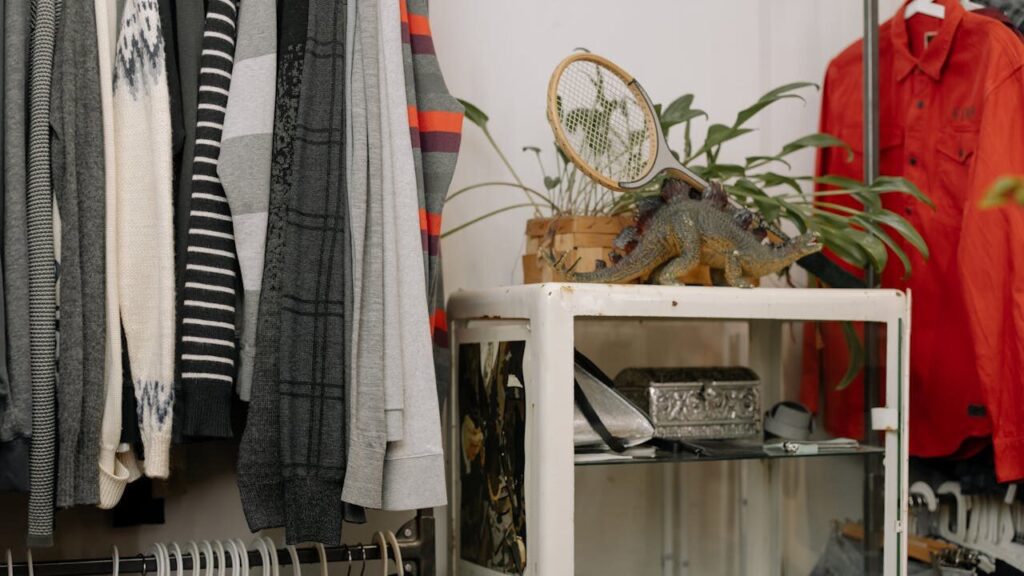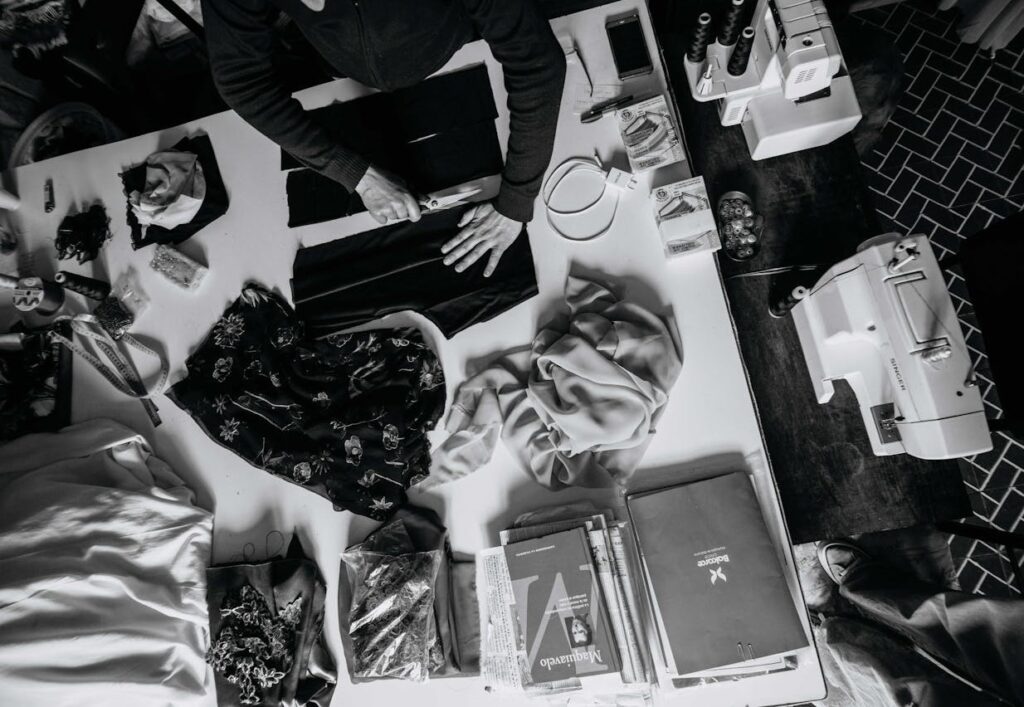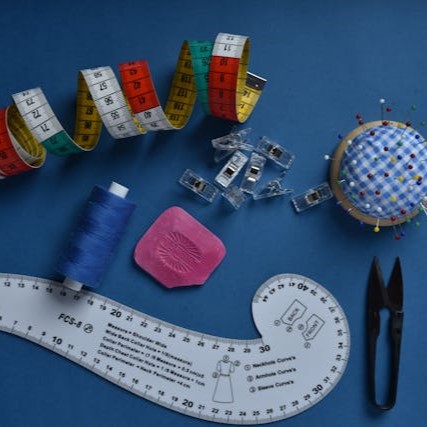Step up in fashion design with its Elements and Principles
Fashion design is a complex and multifaceted field that involves various elements and principles. Understanding and applying these elements and principles will help you create well-balanced, aesthetically pleasing, and innovative fashion designs. Let’s delve into a detailed explanation of the elements and principles of fashion design.

Elements of Fashion Design
- Silhouette
- Definition: The overall shape or contour of a garment.
- Importance: It’s the first thing noticed about a design and sets the foundation for the entire look. Examples include the hourglass, A-line, and H-line silhouettes.
- Fabric
- Definition: The material used to create a garment.
- Importance: Fabric choice affects the texture, drape, durability, and comfort of the design. Examples include cotton, silk, wool, and synthetic fabrics.
- Color
- Definition: The hue, shade, and tone used in the design.
- Importance: Colors can convey mood, season, and personal expression. Designers use color theory to create harmony and evoke specific emotions.
- Details
- Definition: The small elements that add interest and uniqueness to a garment.
- Importance: Details like buttons, zippers, pockets, and embellishments can enhance functionality and aesthetics.
- Proportion and Balance
- Definition: The relationship between different parts of the garment and how they are arranged.
- Importance: Proper proportion and balance ensure the design is visually appealing and comfortable to wear.
- Texture
- Definition: The surface quality of the fabric, whether smooth, rough, soft, or stiff.
- Importance: Texture adds depth and dimension to a design, influencing both its visual and tactile appeal.
- Pattern
- Definition: Repeated decorative designs or motifs on the fabric.
- Importance: Patterns can add uniqueness and character to a garment. Examples include stripes, florals, and geometric shapes.

Principles of Fashion Design
- Balance
- Definition: The distribution of visual weight in a design.
- Types:
- Symmetrical Balance: Equal weight on both sides of a central axis.
- Asymmetrical Balance: Unequal distribution that creates a more dynamic look.
- Importance: Achieves a visually pleasing and harmonious design.
- Proportion
- Definition: The relationship in size between different elements of a garment.
- Importance: Ensures that all parts of the design work together harmoniously. Proper proportion avoids awkward or unflattering looks.
- Emphasis
- Definition: Creating a focal point in the design.
- Importance: Draws attention to specific areas of the garment, such as a neckline or waist, highlighting its best features.
- Rhythm
- Definition: The repetition of elements to create a sense of movement and cohesion.
- Importance: Guides the viewer’s eye through the design, creating a flow that enhances visual interest.
- Harmony/Unity
- Definition: The cohesive arrangement of elements to create a unified design.
- Importance: Ensures all parts of the design complement each other, resulting in a harmonious and pleasing overall look.
- Contrast
- Definition: Using opposing elements to create visual interest.
- Importance: Contrast can be achieved through color, texture, or shape, adding excitement and depth to the design.
- Movement
- Definition: The path the viewer’s eye follows through the design.
- Importance: Effective use of lines, shapes, and arrangement of elements can lead the viewer’s gaze and create a dynamic look.
These principles are not limited to Fashion itself it goes for every design industry.

Example: Designing a Fashion Collection
Imagine you’re designing a fall collection:
- Silhouette: Opt for structured coats and flowing dresses.
- Fabric: Use warm materials like wool, tweed, and velvet.
- Color: Choose autumnal colors like deep reds, burnt oranges, and rich browns.
- Details: Incorporate oversized buttons, leather trims, and embroidered accents.
- Proportion and Balance: Ensure that the lengths and volumes are flattering and practical.
- Texture: Mix smooth velvet with rough tweed for contrast.
- Pattern: Use plaids and houndstooth prints to evoke a cozy, traditional feel.
Applying Principles:
- Balance: Symmetrical designs for a classic look, with asymmetry for modern twists.
- Proportion: Ensure that coats are not overwhelming and dresses highlight the waist.
- Emphasis: Highlight the collar and sleeves with unique details.
- Rhythm: Repeat patterns and colors across different pieces to create a cohesive collection.
- Harmony: Ensure all elements work together to fit the fall theme.
- Contrast: Pair dark colors with light accessories for striking visuals.
- Movement: Use lines and shapes to guide the eye from the collar to the hem.
By mastering these elements and principles, you can create fashion designs that are not only visually stunning but also functional and cohesive. Famous fashion designers have mastered the art of applying the principles of fashion design to create iconic and influential collections.
Here are a few examples of how they apply these principles:
1. Coco Chanel
Emphasis and Simplicity: Coco Chanel revolutionized women’s fashion by emphasizing simplicity and elegance. She often used clean lines and neutral colors to create timeless pieces. The Chanel suit is a perfect example of how she used proportion and balance to create a sophisticated and flattering silhouette.
2. Christian Dior
Balance and Proportion: Christian Dior’s “New Look” in the 1940s emphasized a cinched waist and full skirt, creating an hourglass silhouette. This look highlighted the principles of balance and proportion, making the waist the focal point and creating a harmonious design.
3. Alexander McQueen
Contrast and Movement: Alexander McQueen was known for his dramatic and avant-garde designs. He often used contrasting elements like dark and light colors, hard and soft textures, and sharp and flowing lines to create visual interest. His runway shows were designed to guide the viewer’s eye and create a sense of movement.
This detailed approach to the elements of fashion design ensures a well-thought-out and visually appealing garment.


